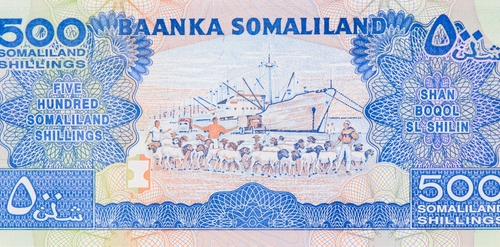The Somali shilling is more than a medium of exchange; it’s a reflection of Somalia’s history, resilience, and economic evolution. For anyone seeking to understand the intricacies of Somalia’s economy, or simply looking to use or transfer Somali shillings, knowing how the currency operates is essential. This blog post will explore the Somali shilling’s history, its role in daily life, and how it fits into the global financial system. Whether you’re a student, an entrepreneur, or someone sending money to Somalia, this guide will answer your questions.
A Quick Overview of the Somali Shilling
The Somali shilling (abbreviated SOS) has been the official currency of Somalia since 1960, following the country’s independence. The Central Bank of Somalia is tasked with overseeing and issuing the Somali shilling; however, due to Somalia’s complex economic and political landscape, the currency operates differently compared to others around the world.
Often referred to locally as the “shilin Soomaali,” the Somali shilling is subdivided into 100 senti. While coins are rarely used in the economy today due to inflation and logistical challenges, banknotes remain the primary form of currency in circulation.
A Brief History of the Somali Shilling
To understand the Somali shilling, it’s important to trace its history:
- Pre-Independence Era
Before Somalia’s independence in 1960, the Italian Somaliland region used the East African shilling and the Italian lira. These currencies were phased out when Somalia achieved self-governance.
- Post-Independence Currency Introduction
The Somali shilling was introduced in July 1960, replacing the East African shilling at par value. Establishing the Somali shilling represented an important step in the nation’s monetary independence and symbolized its development as a nation.
- Challenges During the Civil War
Civil unrest in the 1990s severely disrupted the Somali economy. The collapse of central financial systems led to an unregulated circulation of Somali shillings. Various regions even introduced locally printed banknotes, further complicating the monetary system.
- Recent Developments
Efforts have been ongoing to modernize and stabilize the Somali shilling. The Central Bank of Somalia is working with international organizations on currency reforms to reduce inflation and counteract counterfeit currency issues.
The Somali Shilling in Everyday Life
The Somali shilling plays a vital role in daily life despite significant economic challenges:
- Primary Use
Many Somali transactions, especially in rural areas, are conducted using the shilling. Whether buying groceries at the local market or paying for public transport, the currency facilitates everyday trade.
- Integration with the US Dollar
Due to inflation and currency devaluation, the US dollar is widely used alongside the Somali shilling, particularly for larger transactions. For instance, many businesses price goods in US dollars but accept payment in equivalent Somali shillings.
- Informal Banking Systems
Given the disruptions in Somalia’s formal banking system, informal money transfer systems like hawala play a key role in the circulation of Somali shillings. These systems are pivotal for remittances, which account for a significant share of Somalia’s GDP.
Why the Somali Shilling Matters Globally
Understanding the Somali shilling is not just relevant for people within Somalia; this currency has significant global implications:
- Remittances from the Diaspora
Millions of Somalis live and work abroad, regularly sending money home to support their families. These remittances primarily arrive in US dollars and are converted into Somali shillings for local use. This highlights the importance of money transfer services that support both dollars and shillings.
- Humanitarian Aid
For international organizations operating in Somalia, familiarity with the local currency is a necessity. Aid provided in cash is often distributed as Somali shillings to support local trade and livelihoods.
- International Business
For entrepreneurs or businesses exploring opportunities in Somalia, understanding its currency ecosystem is essential for pricing and operations.
Challenges Facing the Somali Shilling
Despite its importance, the Somali shilling faces ongoing challenges:
- Inflation
The value of the Somali shilling has been severely impacted by inflation, with some goods and services becoming increasingly expensive for local families.
- Counterfeit Currency
The lack of centralized financial control has led to a proliferation of counterfeit banknotes, undermining trust in the currency.
- Lack of Coins
While coins theoretically exist in the Somali currency system, they are no longer in circulation. This absence limits the practicality of the shilling for smaller transactions.
How to Send Money to Somalia in Somali Shillings
For those outside Somalia looking to transfer money, there are safe and reliable ways to do so. Services like Remitly allow you to send funds internationally with ease, ensuring that your loved ones can receive Somali shillings securely. Here’s how it works:
- Download the Money Transfer App
Quickly sign up or log in to your account.
- Enter the Recipient’s Details
Provide the necessary details about your receiver, including their location.
- Send Securely
Your money will be converted into Somali shillings for seamless use upon receipt.
FAQ Section
What is the current exchange rate for the Somali shilling?
Exchange rates for the Somali shilling fluctuate daily. It’s best to use an online currency converter or a trusted financial institution for accurate, real-time rates.
Are Somali shilling coins still in use?
No, Somali shilling coins are no longer in circulation. Transactions are conducted using banknotes, and smaller denominations may be challenging to find.
What role does the Central Bank of Somalia play?
The Central Bank of Somalia manages currency issuance and develops policies to stabilize the economy. It also collaborates with international organizations to strengthen financial systems.
Can I use US dollars in Somalia?
Yes, the US dollar is widely accepted in Somalia, especially in urban areas and for larger transactions.
